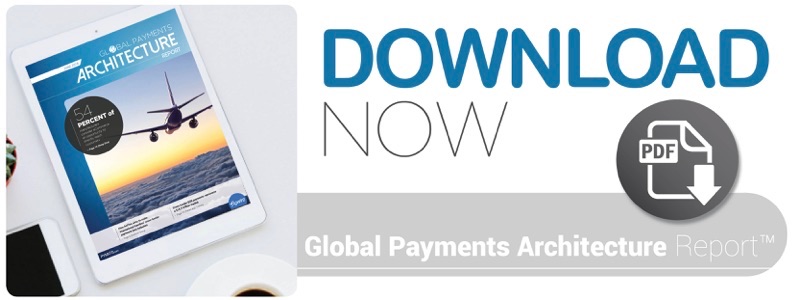Making Cross-Border Travel Payments Less Turbulent

Corporates now demand cross-border payments solutions that do more than move money from point A to point B. This month’s edition of the Global Payments Architecture Report takes a deep dive into the impact of B2B payment solutions on different verticals. This includes insight from Rebecca Kilby, CEO of travel solutions provider AirPlus International Inc., on matching payments solutions with the requirement to simplify international reconciliations.
More companies irre looking toward international expansion, meaning the skies are growing increasingly crowded with business travelers. These travelers might be prepared to pursue opportunities in new markets, but the challenges of cross-border payments can throw a wrench into even the best-laid plans.
Finding an efficient way to pay for and track expenses can be one of the largest frictions, according to Rebecca Kilby, CEO of business travel solutions provider AirPlus International Inc., and doing business overseas carries a host of challenges and hurdles that companies must clear.
“Obviously, with the globalization of the world and the fact that so many countries are involved, companies have to deal with different regulations, languages and currencies,” Kilby said. “There’s a lot of complexity going on. Anything that can minimize that complexity or make it bearable is always a good thing.”
A 2017 report from the Global Business Travel Association (GBTA) found that cash continues to play a significant role in how employees make payments while traveling. Physical currency can be problematic for a variety of reasons, though, including that employees might not get the best foreign exchange rates. What’s more, they’re forced to keep track of receipts during their trips that they must reconcile upon return, a typically manual process, Kilby explained.
Companies in a range of industries, though, are now turning to new solutions to smooth these inefficiencies. Recently published research from AirPlus found the business travel market is beginning to take greater advantage of corporate cards, virtual cards, mobile payments and other solutions designed to address cross-border payment frictions.
PYMNTS recently caught up with Kilby for a deeper understanding of how corporate cards are being used by international business travelers.
In Search Of Cross-Border Payment Consistency
Concerns around international payments are about to become even more crucial, according to AirPlus’ research. Its recent survey of 3,000 travel managers from 24 different countries found 35 percent of respondents expected to see an increase in business-related travel. Emerging global markets — such as India, Brazil and China — are particularly likely to see significant upticks in the space. In other words, Kilby said, travelers and their companies will soon have to contend with even more cross-border payments complexity as additional countries evolve into appealing commercial markets.
“We’re never going to have the same rules everywhere,” she explained. “Unfortunately, every country gets to make [its] own rules.”
Fortunately, corporate cards may help simplify elements of the international payments process. They aim to provide a streamlined payment experience for global business partners, and can often be issued with specific controls, enabling employers to monitor and track their employees’ corporate travel spending habits. The cards can be turned off once the business trip is over, too, ensuring they are not used beyond their intended purpose. This type of control can address the challenges of cross-border payments while reducing the risks involved in sending employees on international trips, Kilby added.
“[The cards] cannot be used with any merchant — they’re really closed down to travel-related costs,” she explained. “That means employees can only use the cards in places the employer wants them using it. They’re also often single-use, so once they’ve been used, they’re closed and can’t be used again. [This] eliminates any risk of someone getting a hold of that number and using it somewhere else.”
Solving The Reconciliation Riddle
Corporate and virtual cards can do more than make cross-border corporate payments a bit less complex, however. According to Kilby, they can also make reconciliation simpler for employees.
Business travelers must keep track of their paper receipts if they rely on cash or personal cards to make purchases in different markets. This can involve a tedious manual process of entering payment information into a company’s system to be reimbursed for work-related expenses, a procedure often made more difficult if transactions were performed in a different currency.
“When you’re traveling for work, you’re away from your family,” Kilby said. “When you get home at the end of the trip, you don’t want to have to spend an hour or two going through your receipts, typing them into the system, checking things and, if something is missing, going to find it. It can end up taking a huge amount of time.”
Corporate payment and virtual cards are designed to mitigate the need for reconciliation by automatically feeding payment information into a company’s general ledger system. These systems also offer data insights for employers, including on the types of purchases and final amount paid, regardless of currency. Demand for this insight and flexibility is likely to increase in the future, Kilby predicted, particularly as more travelers embark on international trips to help their companies expand. Until payment standards are universalized, she believes corporate and virtual payment cards can help smooth international business travelers’ payment frictions.
After all, as corporate travel continues to increase, making cross-border payments less complex may just be the key to helping international business take flight.

